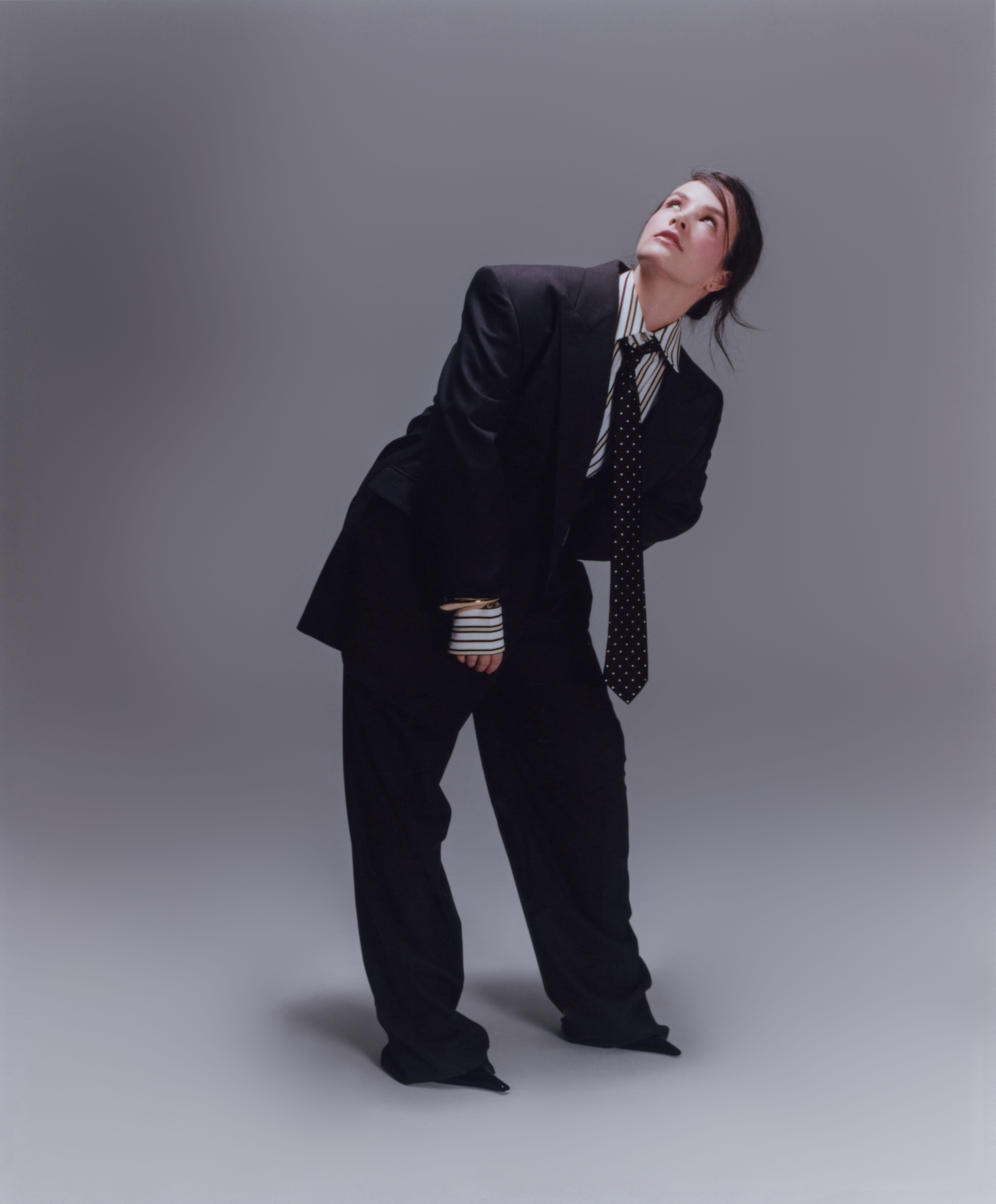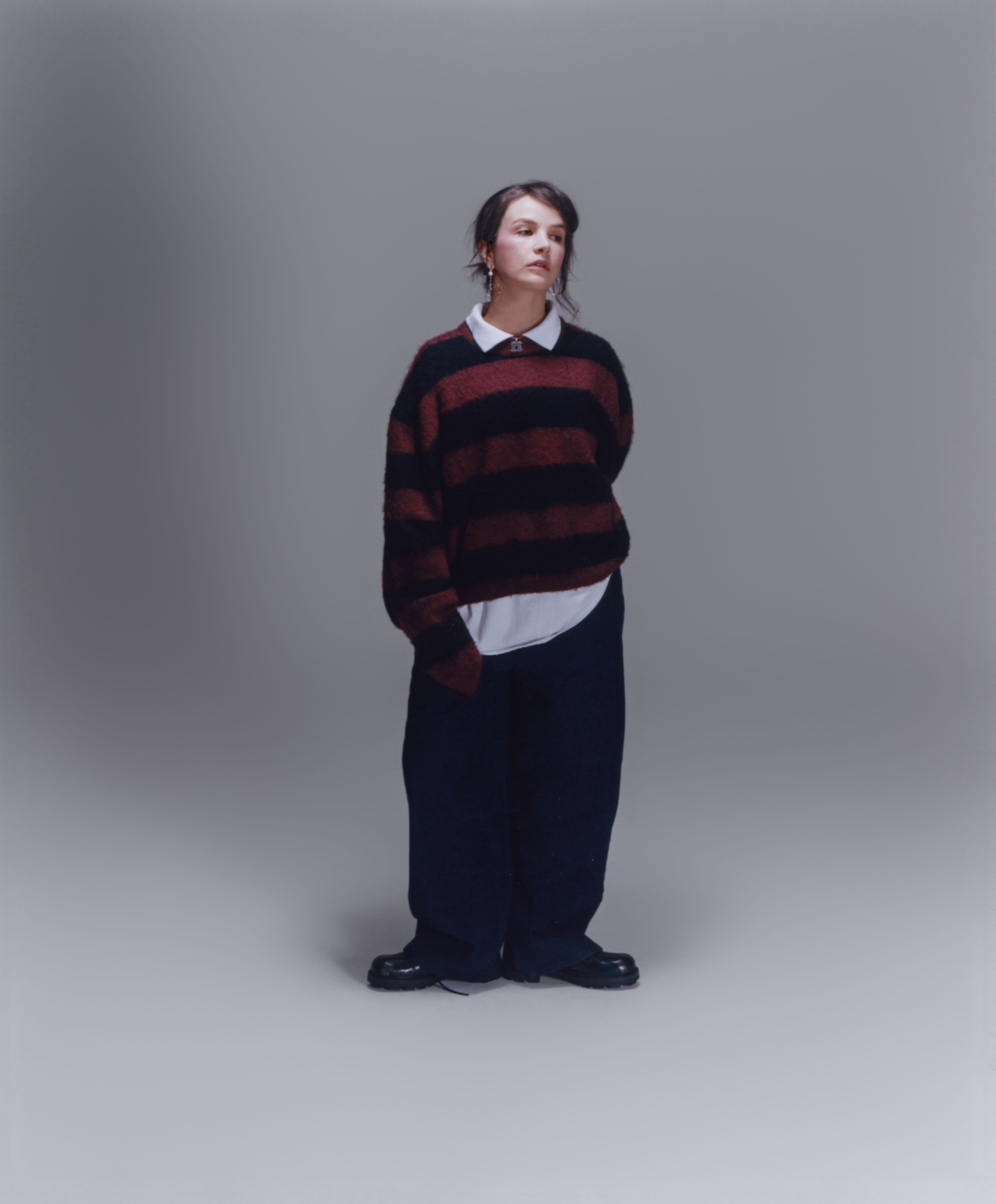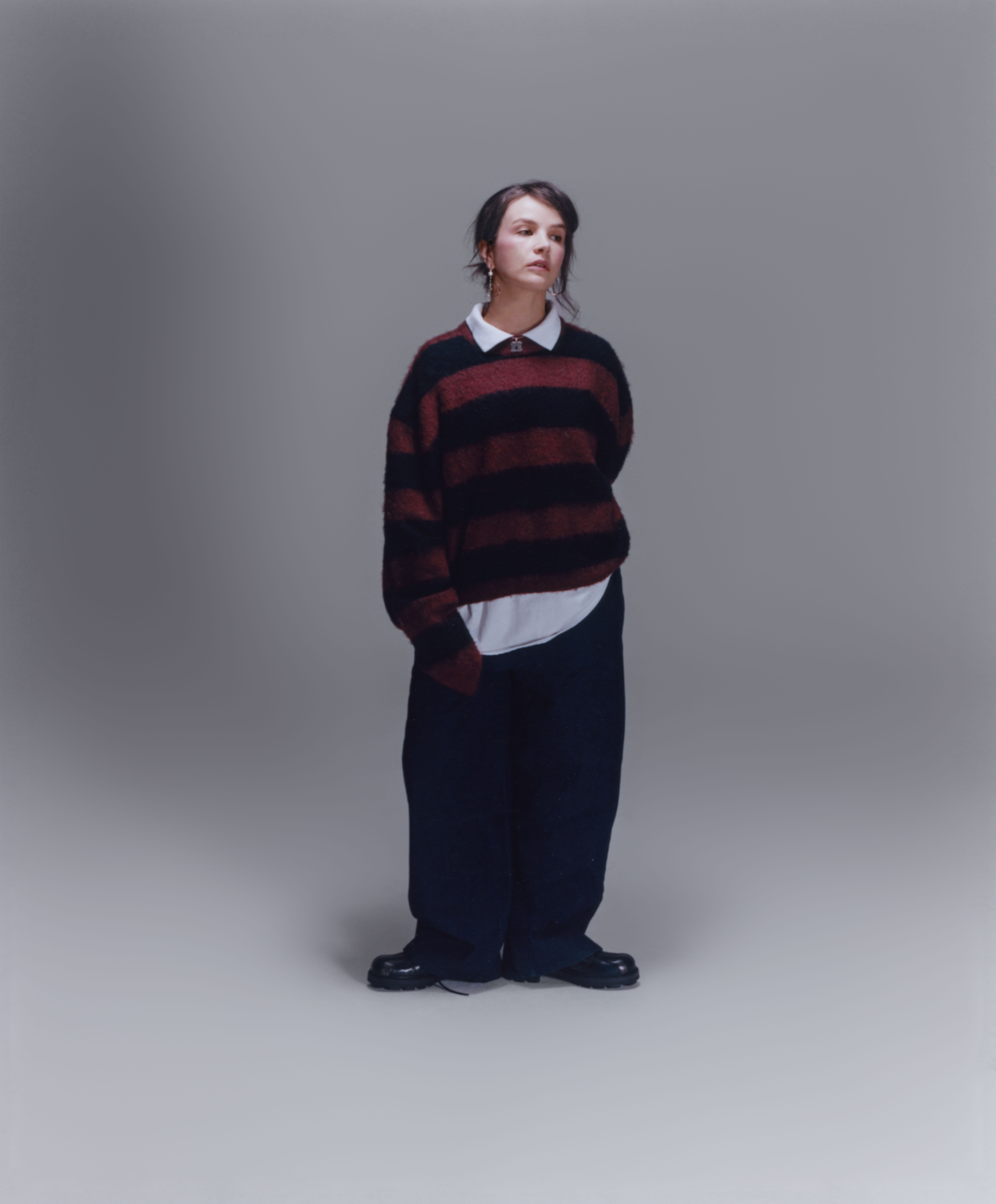Ela Minus doesn’t just make music. She clears a path through sound, carving her own space in the electronic landscape with the same determination as the phrase she loved growing up: Abrir Monte, or “open the mountains.” The saying, which refers to people cutting a path through dense jungle, perfectly reflects her approach—fearlessly forging ahead and making space for herself where there was none before.
Her music is meticulous yet imaginative, balancing pop accessibility with experimental edge. Each track is built with precision—analog synths, incandescent choruses, and hypnotic beats—but nothing is ever predictable. Her sonic world exists in a bilingual state, with lyrics often shifting between Spanish and English, just as she does in life. “I live a bilingual life. It’s my every day—I speak in both languages constantly, and so it naturally leaks into my songwriting. It’s honestly the way I even think now. My thoughts are bilingual.”

Born and raised in Bogotá, Ela first found her footing in music as a drummer in a punk band. “My favorite artist back then was Fugazi,” she says. “The DIY spirit has stayed with me, my sound, and the way I approach my career. There are no rules, and there is nothing that can’t be done.” The Bogotá music scene was small but tight-knit, bound together by a love of raw, aggressive sound. That passion followed her to Boston, where she studied music and expanded her sonic vocabulary. “I don’t know if I would say that I’ve ‘found my sound,’” she admits. “But a lifetime of music, in different countries, different genres, different times in my life—it has all made me who I am as a human and who I am as a musician.”

For three years, she toted snippets of her new album DIA across Colombia, Mexico, and the U.S., recording in the Mojave Desert to Mexico City. But when she landed in Seattle, something shifted. “The instrumentals and the vocals weren’t speaking the same language,” she recalls. “I heard the record and it felt like the vocals were just sitting there, separated from the instrumentals.” I loved what the music was ‘saying,’ so I felt this very strong need to make everything serve that—the lyrics, the vocal performance, my delivery had to be in line with what the music was asking for. So, she scrapped it. What had felt finished was suddenly a work in progress again. The process was anything but easy. “It takes more discipline and concentration to keep a routine that allows for creativity,” she admits. “A lot of energy is spent on that instead of on the music itself. I did it this way because I had to, but I won’t necessarily want to do it again.”


Between acts of rebellion and DIA, Ela has expanded her sonic palette, her songwriting growing as vast as the landscapes she recorded in. “I worked from many different places and studios, which broadened the palette of instruments I used, therefore the sound grew wider, more expansive, and the songwriting with it.” But her biggest lesson? “I learned I’m enough—my being, my hands, my head, and my heart—to make music with whatever I have in hand.”
This cover story appears in the pages of V153: now available for purchase!
Photography Max Tardio
Fashion Liv Vitale
Text Stephanie Wong
Editor Kevin Ponce
Hair Mark Alan Esparza (Kramer + Kramer) using R+Co
Makeup Olivia Barad (See Management) using Dior Beauty
Manicure Jazz Style (See Management) using Dior Beauty
1st photo assistant Takashi Soehl
2nd photo assistant Christean Kareem
Fashion assistants Angelina Khachaturyan, Elissa Dziersk, Ali Ye
Makeup assistant Chérie Fletcher Studio Splashlight
Discover More




